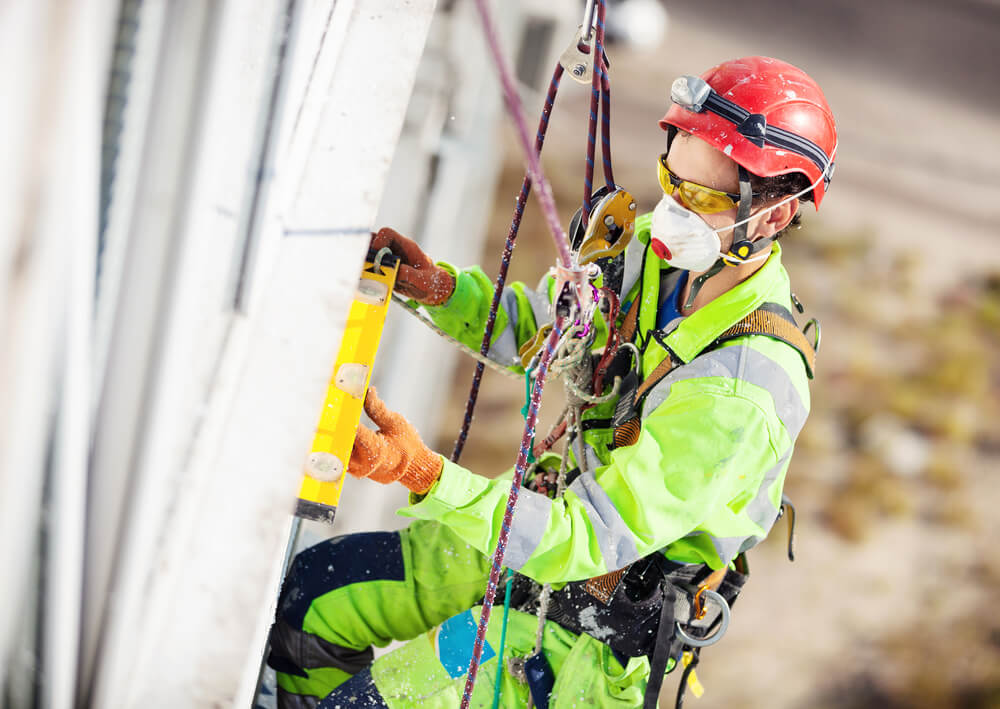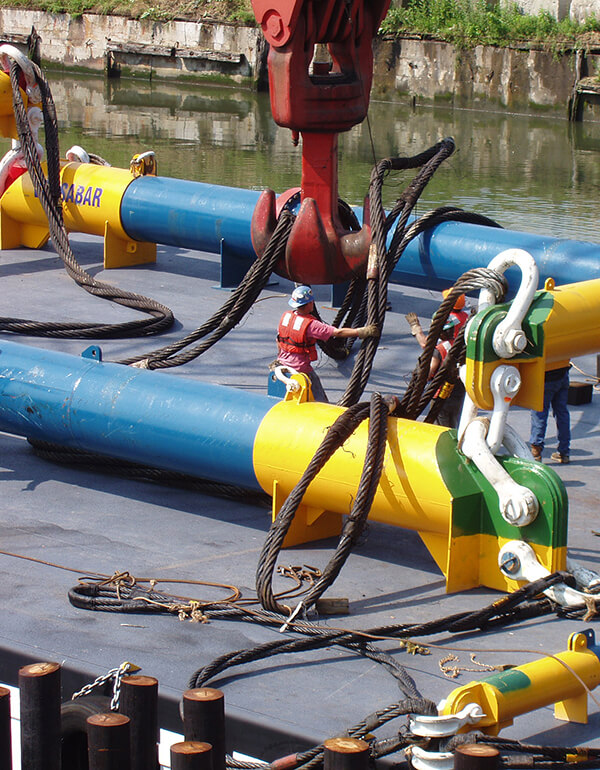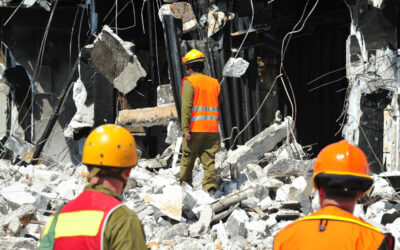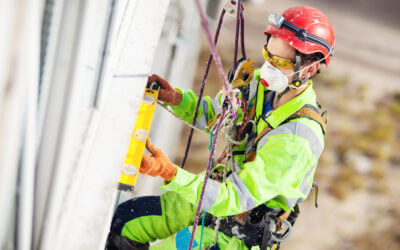Fall safety training is an essential aspect of workplace safety that should never be overlooked. According to the Occupational Safety and Health Administration (OSHA), falls are among the leading causes of workplace injuries and fatalities. Every year, thousands of workers suffer from serious injuries or lose their lives due to falls from heights. This is why fall safety training should be a top priority for your workplace. By ensuring that your employees are properly trained on fall prevention strategies, you can significantly reduce the risk of accidents and injuries. In this article, we’ll explore the importance of fall safety training, the benefits it provides to your business, and why it’s critical to invest in this type of training for your employees. So, whether you’re a small business owner or a manager responsible for workplace safety, read on to learn why fall safety training is a must-have for your workplace.
The Importance of Fall Safety Training in the Workplace
Fall safety training is a crucial aspect of workplace safety that can help prevent injuries and fatalities. Falls are the leading cause of workplace fatalities in the construction industry, and they are also a significant hazard in other industries. A fall from even a relatively low height can cause serious injury or death. That’s why it’s essential to provide your employees with proper fall safety training.
A comprehensive fall safety training program should cover all aspects of fall prevention, including hazard identification, fall protection equipment, and safe work practices. By ensuring that your employees are trained on these topics, you can reduce the risk of accidents and injuries in the workplace. Moreover, a good fall safety training program can also increase employee morale and productivity, as employees will feel safer and more confident in their work.
Implementing a fall safety training program can also help you comply with OSHA regulations. OSHA requires employers to provide fall protection for employees working at heights of six feet or more. Failure to comply with OSHA regulations can result in significant fines and penalties, as well as legal liability if an employee is injured or killed due to a fall.

#image_title
Fall Safety Statistics
Falls are a significant hazard in the workplace, and the statistics are sobering. According to OSHA, falls are the leading cause of death in the construction industry, accounting for almost one-third of all fatalities. In addition, falls are the second leading cause of non-fatal injuries in the workplace, with over 200,000 reported annually.
Moreover, falls can be costly for businesses. The direct costs of a fall injury can include medical expenses, worker’s compensation claims, and legal fees. Indirect costs can include lost productivity, increased insurance premiums, and damage to the company’s reputation.
OSHA Regulations on Fall Protection
OSHA has established fall protection regulations to help prevent workplace falls. These regulations require employers to provide fall protection for employees working at heights of six feet or more. In addition, employers must ensure that the fall protection equipment is properly maintained and inspected and that employees are trained on its use.
OSHA’s fall protection regulations also require employers to conduct a hazard assessment to identify fall hazards in the workplace. This assessment should be conducted by a competent person and should consider factors such as the height of the work, the type of work being performed, and the condition of the work surface.
Components of a Comprehensive Fall Safety Training Program
A comprehensive fall safety training program should cover all aspects of fall prevention, including hazard identification, fall protection equipment, and safe work practices. The program should be tailored to your workplace and should take into account the specific hazards that your employees are likely to encounter.
The following are some of the components that should be included in a fall safety training program:
### Hazard identification
The program should include training on how to identify fall hazards in the workplace. This training should cover factors such as the height of the work, the type of work being performed, and the condition of the work surface.
### Fall protection equipment
Employees should be trained on the proper use of fall protection equipment, such as harnesses, lanyards, and anchors. The training should cover how to inspect the equipment for defects, how to properly adjust the equipment, and how to use it correctly.
### Safe work practices
The program should include training on safe work practices, such as how to properly set up and use ladders and scaffolds, how to maintain three points of contact while climbing, and how to avoid slip and trip hazards.
### Rescue procedures
The program should include training on rescue procedures in case of a fall. Employees should be trained on how to perform a self-rescue if possible, and how to assist in the rescue of a co-worker.

#image_title
Types of Fall Protection Equipment
Fall protection equipment is an essential component of fall safety training. There are several types of fall protection equipment that can be used to prevent falls in the workplace. The following are some of the most common types of fall protection equipment:
### Harnesses
Harnesses are worn by employees and are connected to a lanyard or lifeline. Harnesses are designed to distribute the force of a fall over the body, reducing the risk of injury.
### Lanyards
Lanyards are lines that connect the harness to an anchor point. Lanyards can be made of different materials, such as rope or webbing, and can be adjusted to different lengths.
### Anchors
Anchors are points to which the lanyard or lifeline is attached. Anchors can be permanent, such as a rooftop anchor, or temporary, such as a portable anchor that can be used on a job site.
### Lifelines
Lifelines are used to provide continuous fall protection. Lifelines can be horizontal or vertical and can be made of different materials, such as rope or cable.
Fall Safety Training Best Practices
To ensure that your fall safety training program is effective, there are several best practices that you should follow. These include:
### Tailoring the program to your workplace
Your fall safety training program should be tailored to your workplace and should take into account the specific hazards that your employees are likely to encounter.
### Using a variety of training methods
To ensure that your employees retain the information, you should use a variety of training methods, such as classroom training, hands-on training, and online training.
### Providing refresher training
Fall safety training should not be a one-time event. Employees should receive refresher training on a regular basis to ensure that they stay up-to-date on the latest fall prevention strategies.
### Encouraging employee participation
Employees should be encouraged to participate in the fall safety training program. This can be done by providing incentives for participation or by involving employees in the development of the training program.
Common Fall Hazards in the Workplace
Falls can occur in any workplace, but there are some industries that are more prone to fall hazards than others. The following are some of the common fall hazards in the workplace:
### Construction
Falls are the leading cause of death in the construction industry. Common fall hazards in construction include working at heights, working on scaffolds, and working on ladders.
### Manufacturing
In manufacturing, falls can occur from elevated platforms, such as mezzanines and catwalks. Falls can also occur from equipment, such as forklifts and cranes.
### Healthcare
In the healthcare industry, falls can occur from patient care activities, such as transferring patients from beds to chairs. Falls can also occur from using ladders and step stools to reach overhead storage.
The Cost of Not Implementing Fall Safety Training
Failing to implement fall safety training can be costly for your business. The direct costs of a fall injury can include medical expenses, worker’s compensation claims, and legal fees. Indirect costs can include lost productivity, increased insurance premiums, and damage to the company’s reputation.
Moreover, failing to comply with OSHA regulations can result in significant fines and penalties, as well as legal liability if an employee is injured or killed due to a fall. By investing in fall safety training, you can significantly reduce the risk of falls and the associated costs.
Fall Safety Training Resources and Courses
There are several resources and courses available to help you implement a comprehensive fall safety training program. OSHA provides a wealth of information on fall prevention strategies, as well as regulations on fall protection. In addition, there are many private companies that offer fall safety training courses and materials.
When selecting a fall safety training course, choosing a course tailored to your industry and workplace is essential. The course should cover all aspects of fall prevention, including hazard identification, fall protection equipment, and safe work practices.
In conclusion, fall safety training is an essential aspect of workplace safety that should never be overlooked. Falls are among the leading causes of workplace injuries and fatalities, and they can be costly for businesses. By ensuring that your employees are properly trained on fall prevention strategies, you can significantly reduce the risk of accidents and injuries in the workplace. Moreover, implementing a fall safety training program can increase employee morale and productivity, as employees will feel safer and more confident in their work. So, whether you’re a small business owner or a manager responsible for workplace safety, investing in fall safety training is a must-have for your workplace.
[/fusion_text][/fusion_builder_column][/fusion_builder_row][/fusion_builder_container]





0 Comments